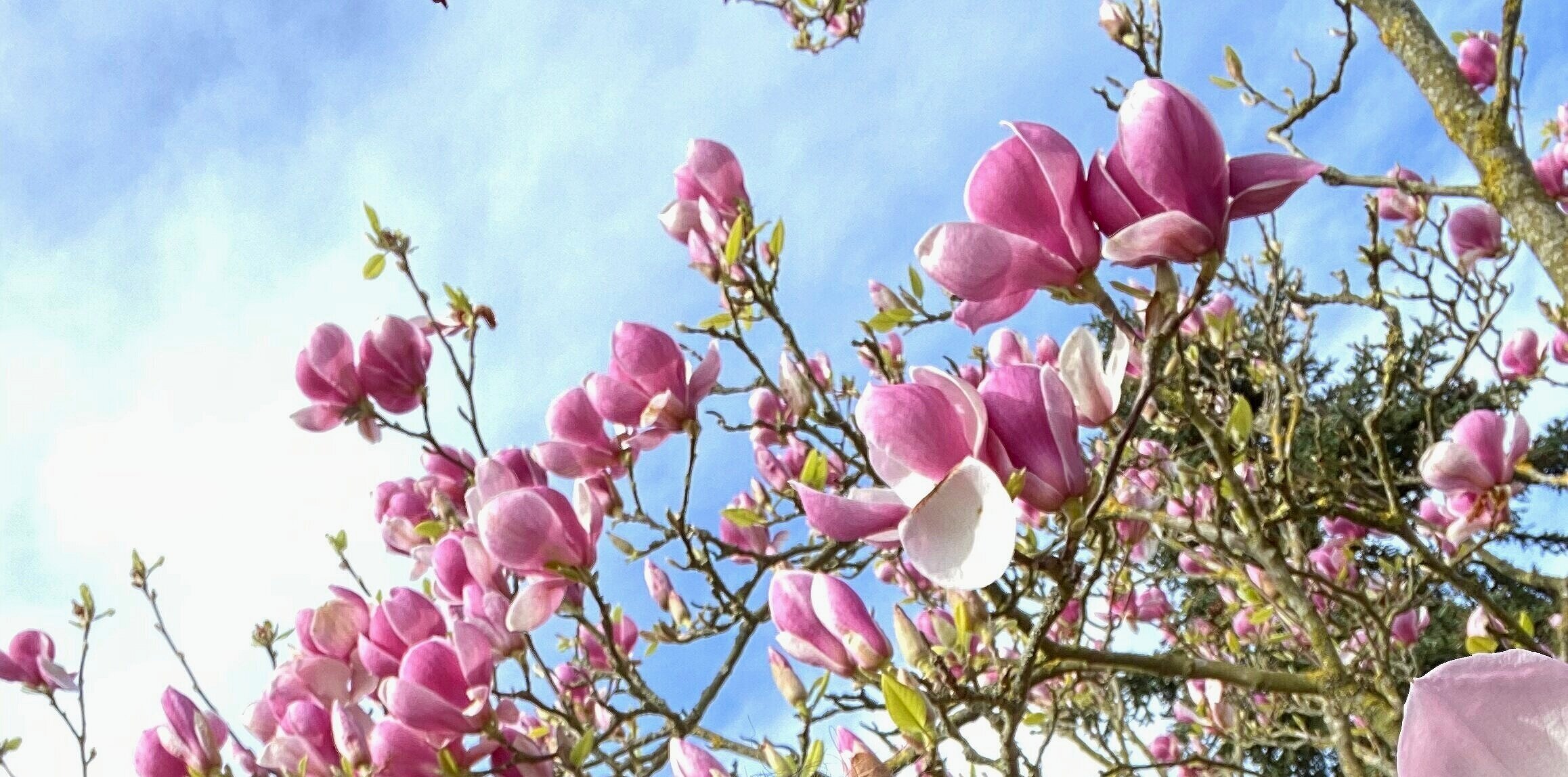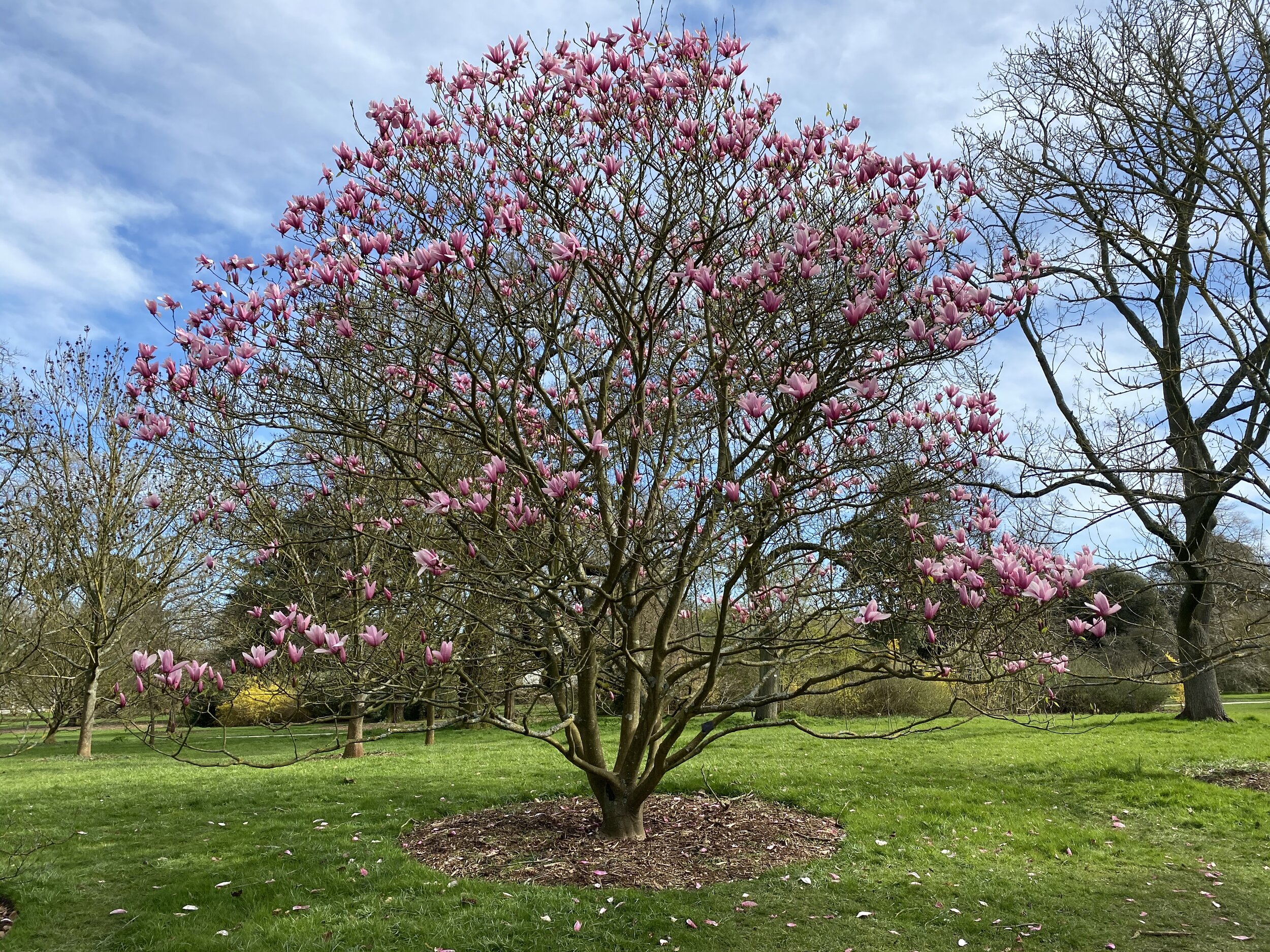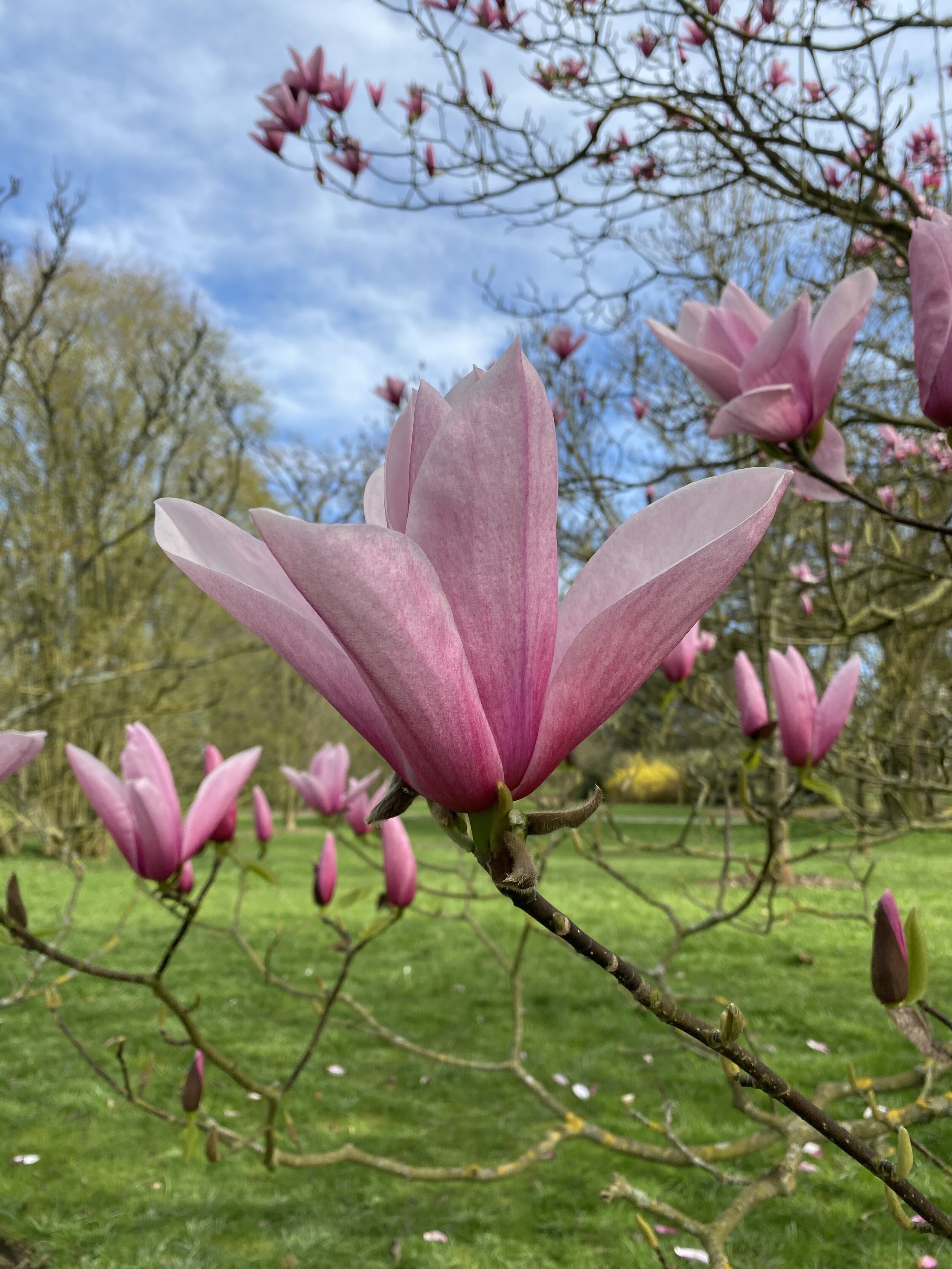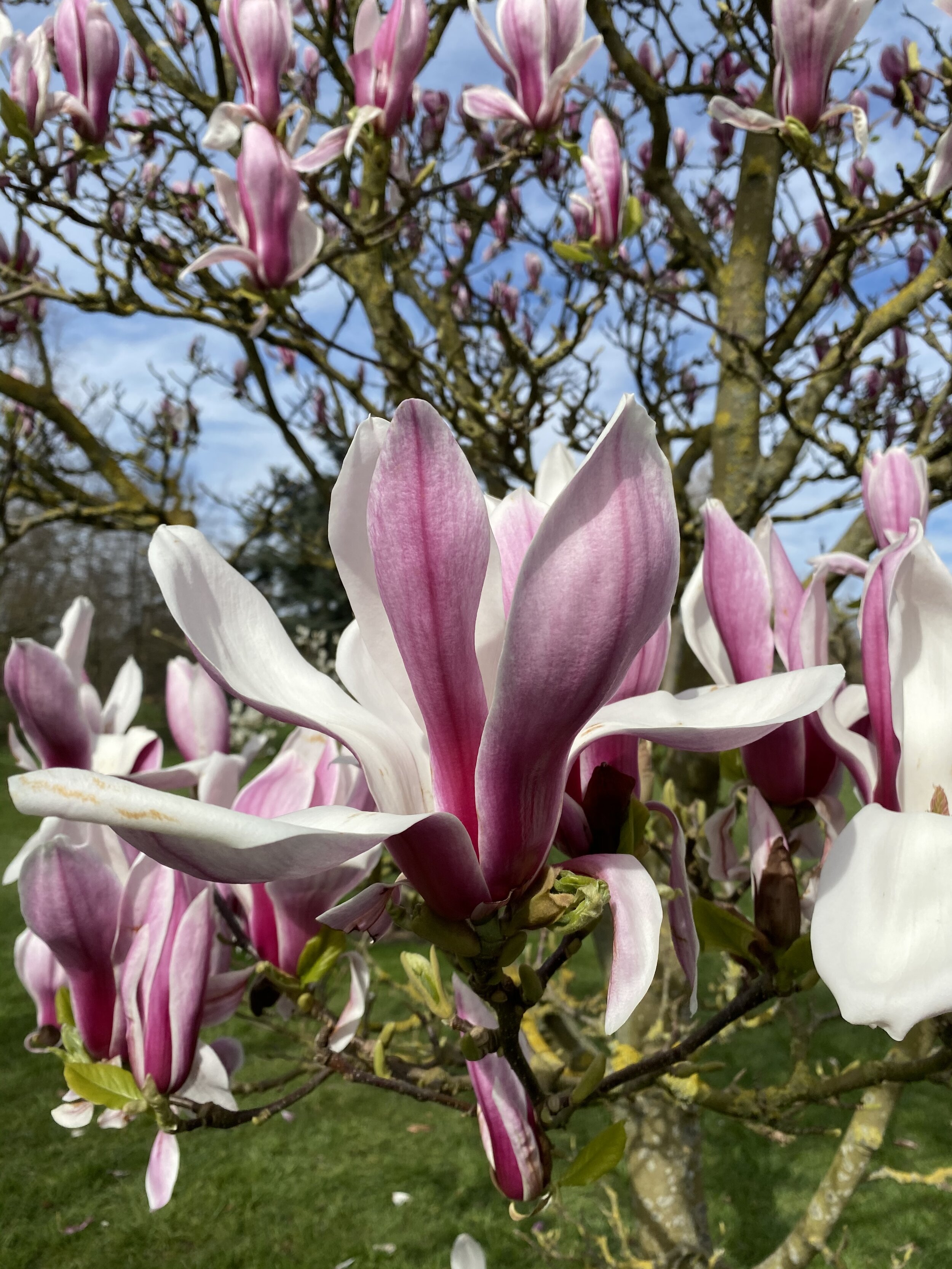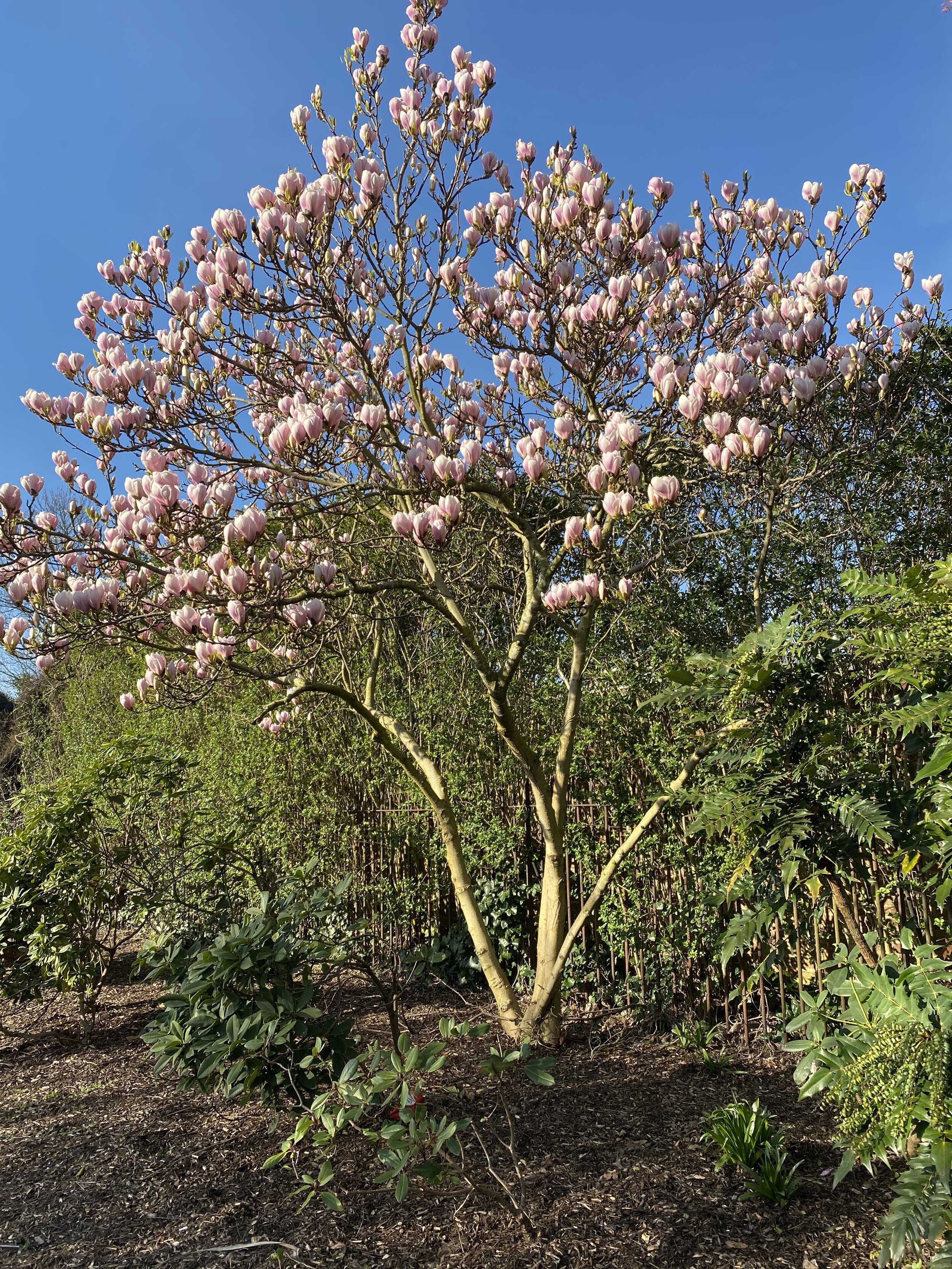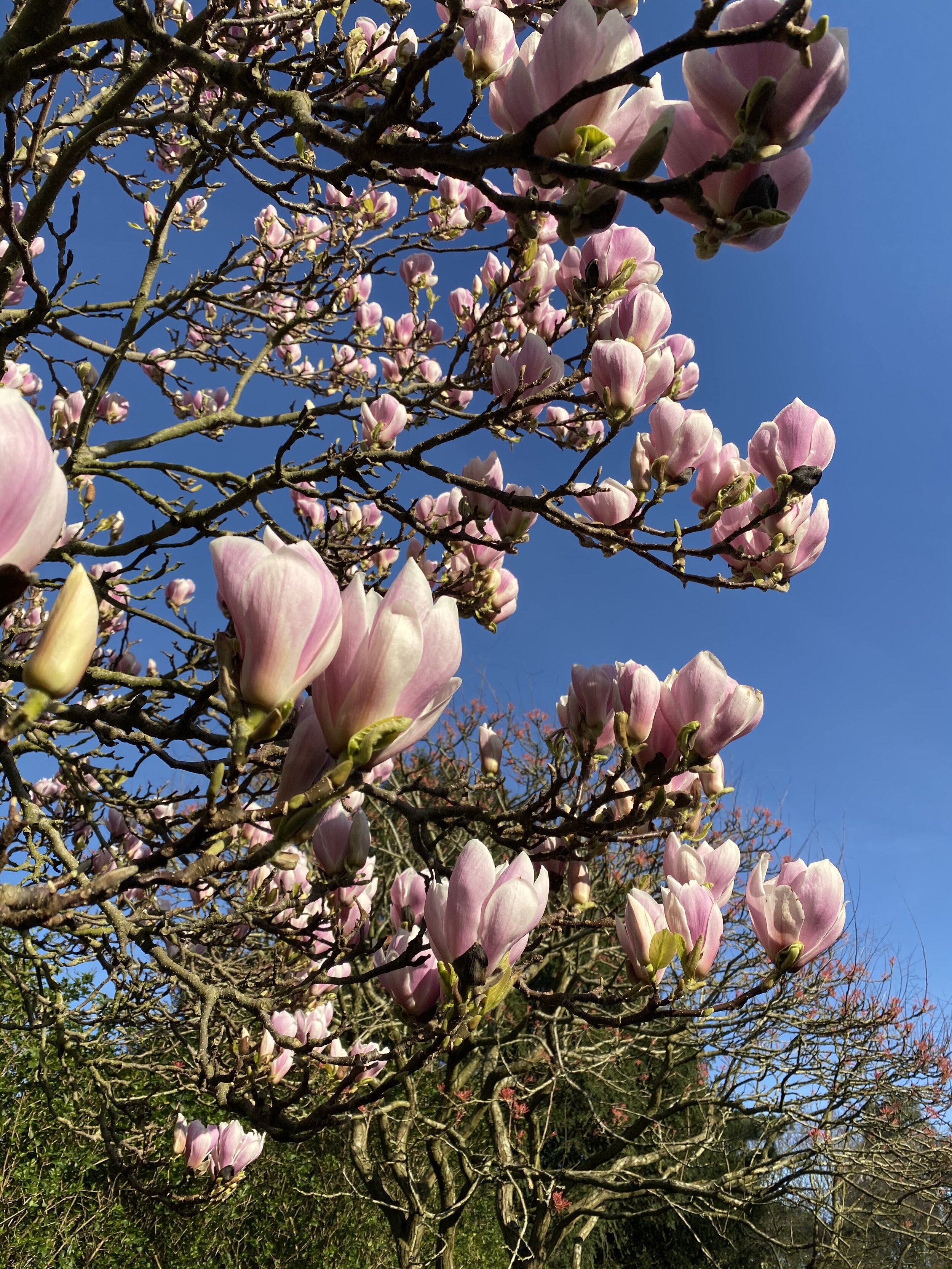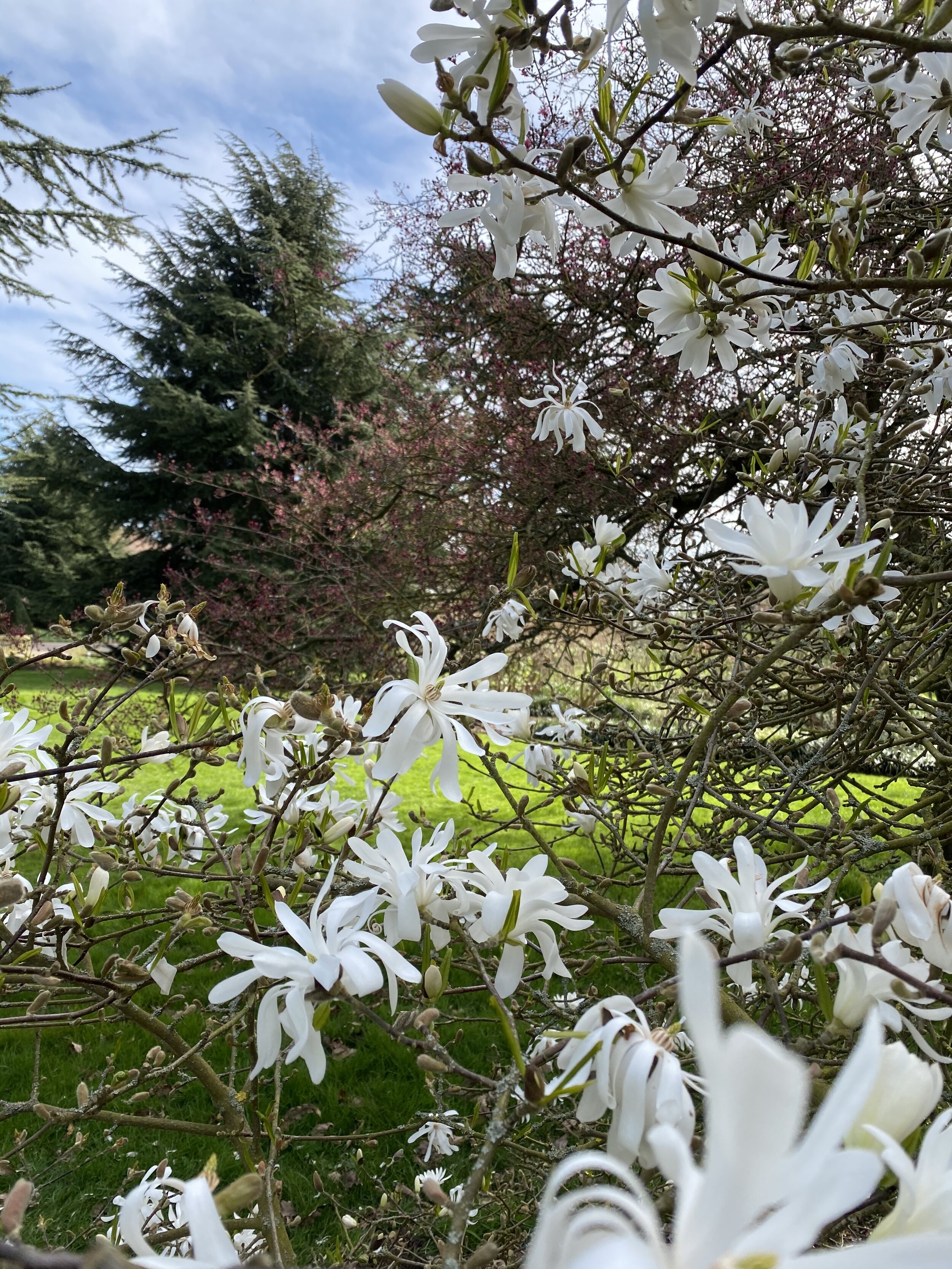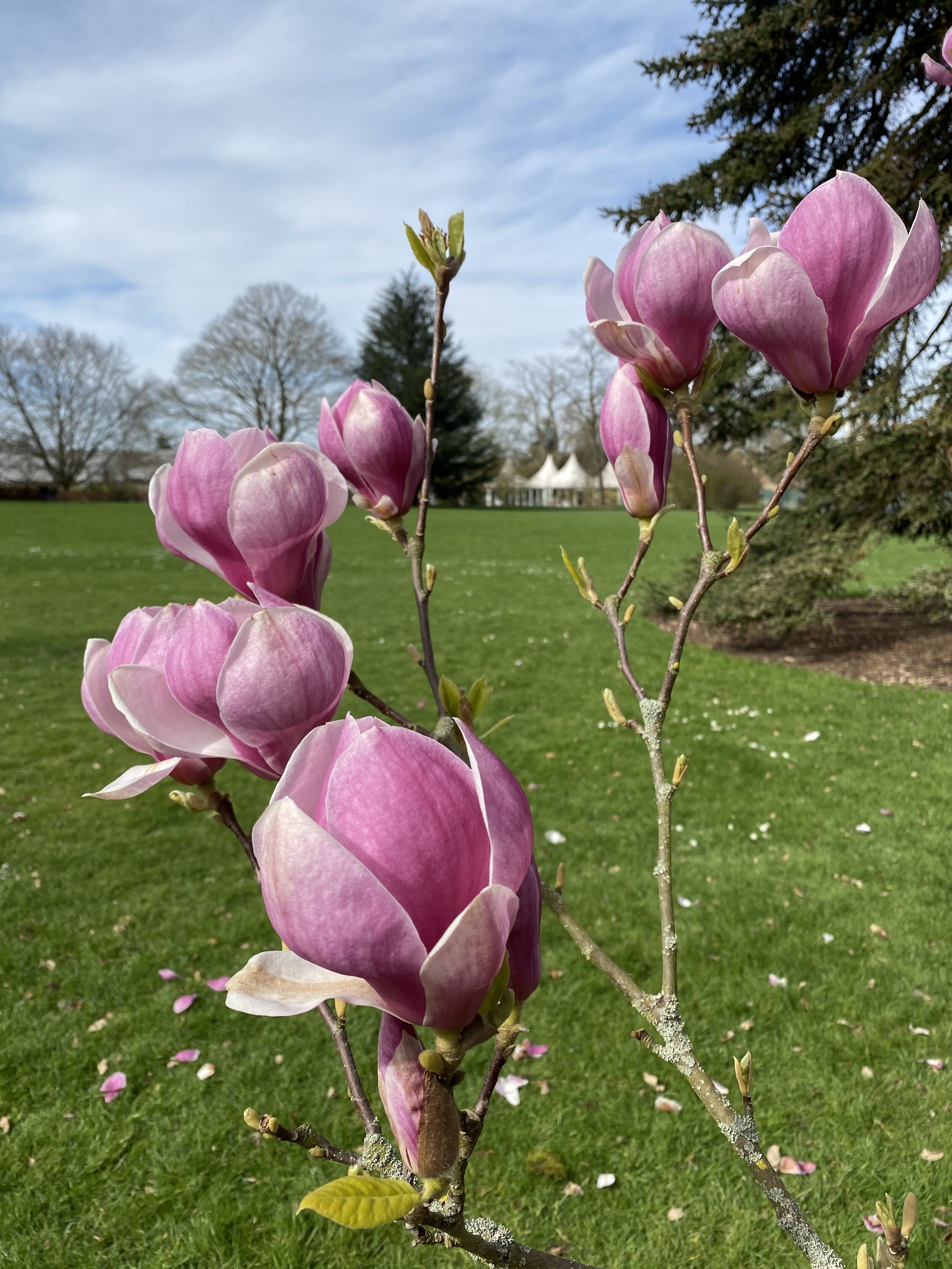Magnificent magnolias
Longer sunnier days. Daffodils. Tulips. Flowering cherry blossoms galore! Now magnolias. Spring-flowering magnolias have come to life, looking magnificent with their leafless branches bearing large, beautiful flowers. On a recent visit to Kew Gardens to see the cherry tree blossom, I was treated to the spectacle of magnolias in full bloom too!
Ahhh!
You cannot but notice a magnolia tree in bloom in spring. Flowers may be star-like (the stellatas), candle-like, goblet-like, saucer-like, or even chrysanthemum-like. Colours vary from pure white to pink to deep purple, and the rare few near-yellow (often acuminata hybrids). I believe there are new breeds of ‘reds’ on the market. Many are fragrant, the scent used in the creation of perfumes.
Magnolia blossom scent is lightly sweet and creamy, but fresh, with a hint of citrus. I like it a lot. It is the top note in the L’instant de Guerlain perfume, and Estée Lauder’s Beautiful Love.
Magnolias are believed to be one of the most ancient flowering plants in existence today. They existed in the dinosaur age. Dinosaurs saw Magnolias blossoming. Magnolias belong to the family Magnoliaceae and are indigenous to Asia (from the Himalayas through China to Japan, and Southeast Asia) and the Americas. The tree was named after Pierre Magnol (1638-1715), the French botanist involved with the early classification of the plant.
There are around 210 species of Magnolia in existence. They may be deciduous, evergreen or semi-evergreen. Magnolias grow well in full sun or partial shade, in moist, well-drained soil of any type. Ideal soil conditions are slightly acidic. Avoid exposed locations. Frost can be an issue when growing magnolias in many parts of the UK. While a mature plant will not likely be killed, frost can damage developing flower buds and damage open flowers, affecting the display. Frost protection is recommended in the UK (depending on locations) for some varieties of magnolia when young. Some magnolias are more frost resistant than others.
Magnolia trees have been cultivated in Asia for centuries. It is a significant flower in Chinese and Japanese culture. In 1687, John Banister, the English missionary to America and naturalist, sent a Magnolia virginiana to Henry Compton, English bishop and avid gardener, in England. This was the first Magnolia known to have been grown in Europe.
Magnolia grandiflora, an evergreen species of magnolia, is the official state flower two US states: Louisiana since 1900, and Mississippi since 1952. Mississippi is is known as ‘the Magnolia State’.
Europeans were later introduced to the Chinese Magnolias (denudata and liliflora) and then to the beautiful ‘star’ Magnolia (stellata) from Japan in the mid-nineteenth century. Then came Magnolia campbellii from the Himalayas … and so the story goes on, until we get to the large number of species and hybrids we have today. A quick blog post cannot begin to do justice to this amazing genus.
When think of magnolias, I think ‘drama’. They do know how to put on a spectacular show. The sheer size of the blooms can be staggering. Young pale green leaves (they’ll darken as they mature) help set the scene.
Pure drama …
Big and beautiful!
I have seven young magnolias, four evergreen, and three deciduous. Three are spring-flowering. The evergreens are healthy and growing slowly, as they do. Two of the deciduous ones appear to be struggling somewhat. They are all planted in the ground now but I suspect that the length of time spent in pots has taken their toll.
Three of my magnolias are coming into flower now. They are Magnolia x ‘Fairy White’, Magnolia x ‘Mighty Mouse’ - a dwarf, and Magnolia x loebneri ‘Leonard Messel’. They are all young ‘rookies’ so have yet to attain any semblance of the magnificence of a mature specimen. The individual blooms are no less beautiful though.
Here are my Magnolia ‘rookies’ in 2020!
Flowers on my Magnolia x ‘Fairy White’ are opening! ‘Fairy White’ is a new hybrid of Michelia bred by the renowned New Zealand breeder, Mark Jury. At it’s peak (mine’s not quite there yet) I expect it to produce masses of beautiful lightly-scented, pure-white flowers in early spring. It always surprises me by continuing to flower sporadically throughout summer and into the autumn. Unusually, flowers are produced along the stems and as well as the tips. This magnolia is a compact, bushy shrub or small tree with mid-green leaves. It is evergreen but may loose all it’s leaves in a very cold winter.
Magnolia x ’Mighty Mouse’ is a relatively new, truly dwarf hybrid magnolia, growing to 1m tall and 1m wide. In my experience, it’s a toughie too, withstanding harsh winters quite well. This deciduous shrub produces small furry grey buds, which open to reveal small goblet-shaped flowers in spring. Flowers are wine-red on the outside, but soon fade to pale pink when fully open. Leaves are small, rounded and mid-green, and appear after the flowers. ‘Mighty Mouse’ was bred in New Zealand by Vance Hooper.
Magnolia x loebneri 'Leonard Messel' is a hybrid that takes the form of a beautiful upright shrub or small tree, boasting lilac-pink, star shaped flowers with creamy white/pink centres. Normally flowering from late spring to early summer (April-June), the flowers are scented and up to 10cm in diameter. Mine has been flowering since mid-March. Ovate, slender mid/dark-green foliage emerges later in spring and summer.
Magnolia 'Leonard Messel' will grow to 4 x 3 metres in 20 years.
Over the past two weeks I’ve seen many impressive Magnolias in flower at Kew Gardens and in parks and gardens in my local neighbourhood. Talk about drama!
I look forward to Magnolia grandifloras coming into flower in the summer.


